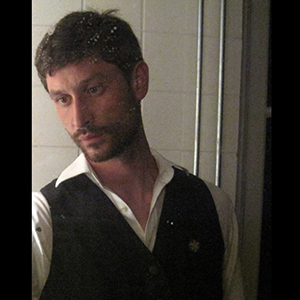Having Less, Dreaming More
Creative and constructive strategies to face climate change and ecological transition
Before sharing a reflection on the coming times and the ecological transition, we feel it is necessary to share another reflection focused on the past. What can we salvage from a decade dominated by the crisis? What have we learned over the past ten years?
The crisis—first financial, then economic and later institutional—left in its wake a large number of dislocated people. Jobs lost, interior and exterior migrations, new professional plans, family restructuring.
Many made individual decisions to adapt to the new situation, but at the same time many of these people found each other in public spaces and, together, understood that the absence of resources was also an opportunity to create supportive relationships contrary to such a hostile environment. When they reached a certain point, these relationships were no longer a way of circumventing reality but a proposal for a way of living that directly confronted reality.
As we write this, we are obviously thinking about the earthquake of the 15-M Movement in Spain, but more specifically we are thinking about spaces and people such as the Campo de Cebada in Madrid and its neighborhood assembly or the Autobarrios Sancristóbal project with its platform consisting of diverse agents from inside and outside the neighborhood. Or in the Red Huertos Urbanos (Urban Garden Network) in Madrid, which is perhaps the best example of how a movement based on an idea of legitimacy—in this case the right to revitalize abandoned spaces in the city in order to have a space available for non-commercial crops—manages to reach a large enough critical mass to converse with Madrid City Council and achieve a legal status through a process of regularization.
There are many, many examples, and not just in Madrid. Over the past ten years and in different parts of the world, communities of citizens have created projects in public spaces that have brought certain qualities to the urban landscape that the traditional, technical approach was incapable of producing. Without attempting to summarize an extraordinarily complex and varied panorama, we would like to highlight three of the most common phenomena we have observed in our collaborative brushes with these places:
Dialogue. Communities which build and care for a space undergo a process of dialogue and comprehension among their members that is essential for its day-to-day management. But this process of dialogue expands in scale when these spaces are transformed into a service for the city. One of the loveliest examples we know of is the Esta Es una Plaza, an urban allotment in Madrid that also provides an oasis in the density and hustle and bustle of the Lavapiés borough, where it has become a space in which to raise children in a neighborhood lacking in green spaces.
Imagination and Expanded Desire. In the constant cross-flow of needs and solutions involved in the assemblies of neighborhood projects, the responses to basic problems cannot be resolved with economic resources. Jaime Lerner, the successful mayor of Curitiba, said that creativity begins by knocking a zero off the budget and these projects are a continual example of that.
Autonomy and Proactivity. By coming together, citizens discover they can overcome challenges that would be impossible individually. Reaching this certainty involves a shift and change in people’s attitudes; they progress from being citizens to citizenship.

Autocole Ideo project. A giant pipe becomes a fun slide at the Ideo School, Madrid. Image © Creative Commons 4.0 unported, BY-NC-SA
So. That is where we are coming from. It seems the crisis has passed but, whether this is true or not, new challenges are arriving that accumulate on top of the ones we have not yet overcome. They are there in the news we hear every day: low birth rate, unemployment, territorial identity. We won’t get into that now, but there is one which particularly interests us because of the attention we understand it is being given, and that is climate change and ecological transition.
The issue is there; to us its existence and transcendence are unarguable. Perhaps we are not yet aware of what reverting this situation means. Can anyone imagine only being able to fly once in a lifetime? Or not being able to access any product that is produced more than 200 kilometers from where we live? In short, would we be capable of facing an ecological transition based on drastic measures to renounce our habits? Perhaps not, or not alone.
Before this happens, and it won’t be long now, it would be more useful to expand this proactive and purposeful attitude that has been generated in the citizen-run public spaces, where problems are turned into opportunities to dream up happier ways of living.

Basurama, a collective focused on action on productive processes, the generation of waste they involve and the creative possibilities they present. Image © Basurama
Serving as a modest example is our Re-Use Labs project. In response to the abundance of public materials that almost all city councils have at their disposal, they opt for strategies of perpetual storage or, in the best-case scenario, of repurposing materials through recycling (not forgetting that recycling is an industrial process which also consumes resources). In light of this, Re-Use Labs proposes a more circular route, designing protocols that provide a simple way for these materials to have a second life and to be used in citizens’ projects, where once again they provide a public service.
There won’t be just one way of facing the ecological transition, but some strategies will be more creative, more constructive and will allow us to be happier and to create better ways of relating to one another. We bet on these ones.
Main image: The transformation of the Aravaca Primary School playground in Madrid, with collaboration from the pupils and using waste materials. Image © Creative Commons 4.0 unported, BY-NC-SA
